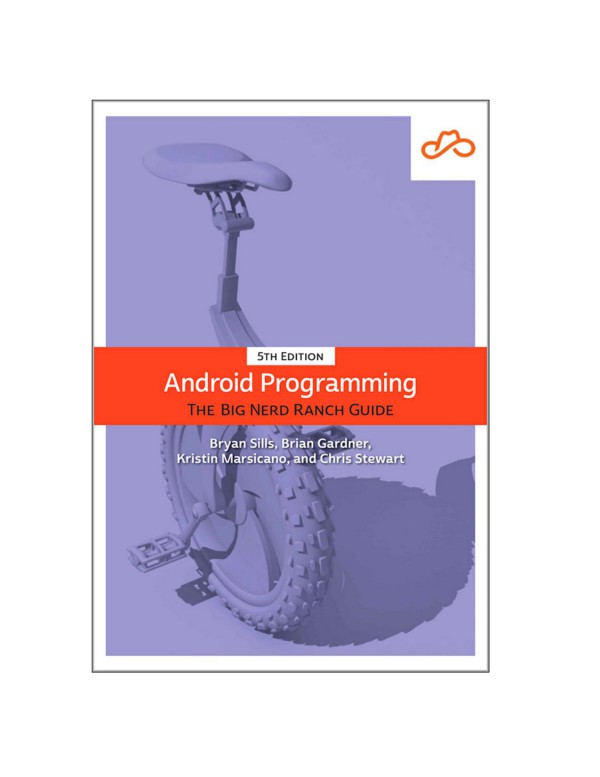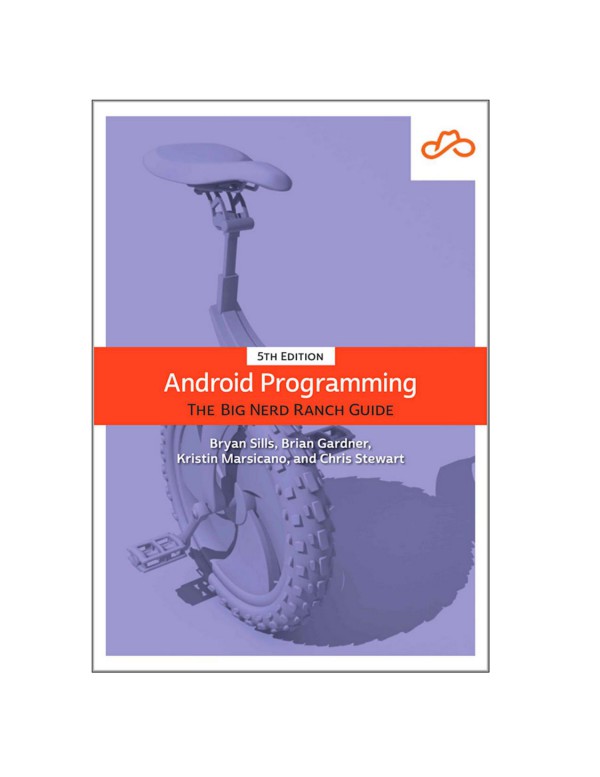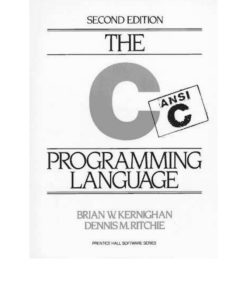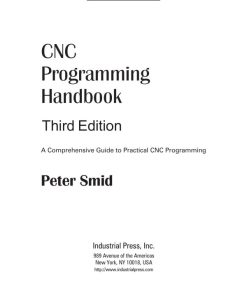Android Programming The Big Nerd Ranch Guide 5th Edition by Kristin Marsicano, Brian Gardner 9780137645732 0137645732
$50.00 Original price was: $50.00.$25.00Current price is: $25.00.
Authors:Kristin Marsicano; Brian Gardner; Bill Phillips; Chris Stewart , Series:Computer Science [141] , Tags:Mobile App Development & Programming; Operating Systems; Programming Languages , Author sort:Marsicano, Kristin & Gardner, Brian & Phillips, Bill & Stewart, Chris , Ids:9780137645794 , Languages:Languages:eng , Published:Published:May 2022 , Publisher:Addison-Wesley Professional , Comments:https://github.com/bignerdranch/AndroidCourseResources/raw/master/4thEdition/Errata/4eAddendum.pdf
Android Programming The Big Nerd Ranch Guide 5th Edition by Kristin Marsicano, Brian Gardner – Ebook PDF Instant Download/Delivery.9780137645732, 0137645732
Full download Android Programming The Big Nerd Ranch Guide 5th Edition after payment

Product details:
ISBN 10: 0137645732
ISBN 13: 9780137645732
Author: Kristin Marsicano; Brian Gardner; Bill Phillips; Chris Stewart
Android Programming: The Big Nerd Ranch Guide is an introductory Android book for programmers with Kotlin experience. Based on Big Nerd Ranch’s popular Android Bootcamp, this guide will lead you through the wilderness using hands-on example apps combined with clear explanations of key concepts and APIs. This book focuses on practical techniques for developing apps in Kotlin compatible with Android 7.0 (Nougat) through Android 12 and beyond. Write and run code every step of the way, using Android Studio to create apps that integrate with other apps, download and display pictures from the web, store data in databases, and more. Learn about the latest patterns and techniques, including Kotlin coroutines and Jetpack Compose, a new way to build Android UIs. Each chapter and app has been designed and tested to provide the knowledge and experience you need to get started in Android development.
Android Programming The Big Nerd Ranch Guide 5th Table of contents:
1. Your First Android Application
App Basics
Creating an Android Project
Navigating in Android Studio
Laying Out the UI
The view hierarchy
View attributes
android:layout_width and android:layout_height
android:orientation
android:text
Creating string resources
Previewing the layout
From Layout XML to View Objects
Resources and resource IDs
Wiring Up Views
Getting references to views
Setting listeners
Making Toasts
Running on the Emulator
For the More Curious: The Android Build Process
Android build tools
Challenges
Challenge: Switching Your Toast for a Snackbar
2. Interactive User Interfaces
Creating a New Class
Updating the Layout
Wiring Up the User Interface
Adding an Icon
Referencing resources in XML
Screen Pixel Densities
Running on a Device
Challenge: Add a Listener to the TextView
Challenge: Add a Previous Button
3. The Activity Lifecycle
Rotating GeoQuiz
Activity States and Lifecycle Callbacks
Logging the Activity Lifecycle
Making log messages
Using Logcat
Exploring How the Activity Lifecycle Responds to User Actions
Temporarily leaving an activity
Finishing an activity
Rotating an activity
Device Configuration Changes and the Activity Lifecycle
For the More Curious: Creating a Landscape Layout
For the More Curious: UI Updates and Multi-Window Mode
For the More Curious: Log Levels
Challenge: Preventing Repeat Answers
Challenge: Graded Quiz
4. Persisting UI State
Including the ViewModel Dependency
Adding a ViewModel
ViewModel lifecycle
Add data to your ViewModel
Saving Data Across Process Death
For the More Curious: Jetpack, AndroidX, and Architecture Components
For the More Curious: Avoiding a Half-Baked Solution
For the More Curious: Activity and Instance State
5. Debugging Android Apps
Exceptions and Stack Traces
Diagnosing misbehaviors
Logging stack traces
Setting breakpoints
Android-Specific Debugging
Using Android Lint
Build issues
Challenge: Using Conditional Breakpoints
Challenge: Exploring the Layout Inspector
Challenge: Exploring the Profiler
6. Testing
Two Types of Tests
JVM Tests
Instrumented Tests with Espresso and ActivityScenario
Challenge: Asserting Yourself
7. Your Second Activity
Setting Up a Second Activity
Creating a new activity
A new activity subclass
Declaring activities in the manifest
Adding a cheat button to MainActivity
Starting an Activity
Communicating with intents
Explicit and implicit intents
Passing Data Between Activities
Using intent extras
Getting a result back from a child activity
Setting a result
Sending back an intent
Handling a result
How Android Sees Your Activities
For the More Curious: startActivityForResult
For the More Curious: The Back Button and the Activity Lifecycle
Challenge: Closing Loopholes for Cheaters
Challenge: Tracking Cheat Status by Question
8. Android SDK Versions and Compatibility
Android SDK Versions
A sane minimum
Minimum SDK version
Target SDK version
Compile SDK version
Compatibility and Android Programming
Jetpack libraries
Safely adding code from later APIs
Using the Android Developer Documentation
Challenge: Reporting the Device’s Android Version
Challenge: Limited Cheats
9. Fragments
The Need for UI Flexibility
Introducing Fragments
Starting CriminalIntent
Creating a new project
Creating a Data Class
Creating a Fragment
Defining CrimeDetailFragment’s layout
Creating the CrimeDetailFragment class
Different types of fragments
Implementing fragment lifecycle functions
Wiring up views in a fragment
Hosting a Fragment
Defining a FragmentContainerView
The FragmentManager
The fragment lifecycle
Fragments and memory management
Challenge: Testing with FragmentScenario
10. Displaying Lists with RecyclerView
Adding a New Fragment and ViewModel
ViewModel lifecycle with fragments
Adding a RecyclerView
Implementing a LayoutManager
Creating an Item View Layout
Implementing a ViewHolder
Implementing an Adapter to Populate the RecyclerView
Setting the RecyclerView’s adapter
Recycling Views
Cleaning Up Binding List Items
Responding to Presses
Lists and Grids: Past, Present, and Future
For the More Curious: A Smarter Adapter with ListAdapter
Challenge: RecyclerView View Types
11. Creating User Interfaces with Layouts and Views
Introducing ConstraintLayout
Introducing the Layout Editor
Using ConstraintLayout
Making room
Adding views
ConstraintLayout’s inner workings
Editing properties
Making list items dynamic
Styles, Themes, and Theme Attributes
For the More Curious: Margins vs Padding
For the More Curious: Advanced Features in ConstraintLayout
Challenge: Formatting the Date
12. Coroutines and Databases
An Introduction to Asynchronous Code on Android
Using coroutines
Consuming data from coroutines
Creating a Database
Room architecture component library
Defining entities
Creating a database class
Creating a type converter
Defining a Data Access Object
Accessing the Database Using the Repository Pattern
Importing Prepopulated Data
Querying the Database
Keeping the Changes Flowing
Challenge: Addressing the Schema Warning
For the More Curious: Singletons
13. Fragment Navigation
Performing Navigation
Implementing the Navigation component library
Navigating to the detail screen
Passing data to a fragment
Unidirectional Data Flow
Updating the Database
For the More Curious: A Better List Preview
Challenge: No Untitled Crimes
14. Dialogs and DialogFragment
Creating a DialogFragment
Showing a DialogFragment
Passing Data Between Two Fragments
Passing data to DatePickerFragment
Returning data to CrimeDetailFragment
Setting a fragment result
Challenge: More Dialogs
15. The App Bar
The Default App Bar
Menus
Defining a menu in XML
The app namespace
Creating the menu
Responding to menu selections
For the More Curious: App Bar vs Action Bar vs Toolbar
For the More Curious: Accessing the AppCompat App Bar
Challenge: An Empty View for the RecyclerView
Challenge: Deleting Crimes
16. Implicit Intents
Adding Buttons
Adding a Suspect Property
Using a Format String
Using Implicit Intents
Parts of an implicit intent
Sending a crime report
Asking Android for a contact
Getting data from the contacts list
Contacts permissions
Checking for responding activities
Disclosing queries
Querying
People also search for Android Programming The Big Nerd Ranch Guide 5th :
android programming the big nerd ranch guide 5th edition github
android programming the big nerd ranch guide 5th edition ebook
android programming the big nerd ranch guide github
android programming the big nerd ranch guide
You may also like…
eBook PDF
The C Programming Language 2nd edition by Brian Kernighan, Dennis Ritchie 9780133086218 0133086216
eBook PDF
Duke’s Anesthesia Secrets 5th Edition by James Duke, Brian Keech ISBN 0323249787 9780323249782
eBook CHM
Javascript The Definitive Guide 5th Edition by David Flanagan ISBN 0596101996 9780596101992
eBook PDF
Manual of Cardiovascular Medicine 5th Edition by Brian Griffin ISBN 1496312600 978-1496312600












